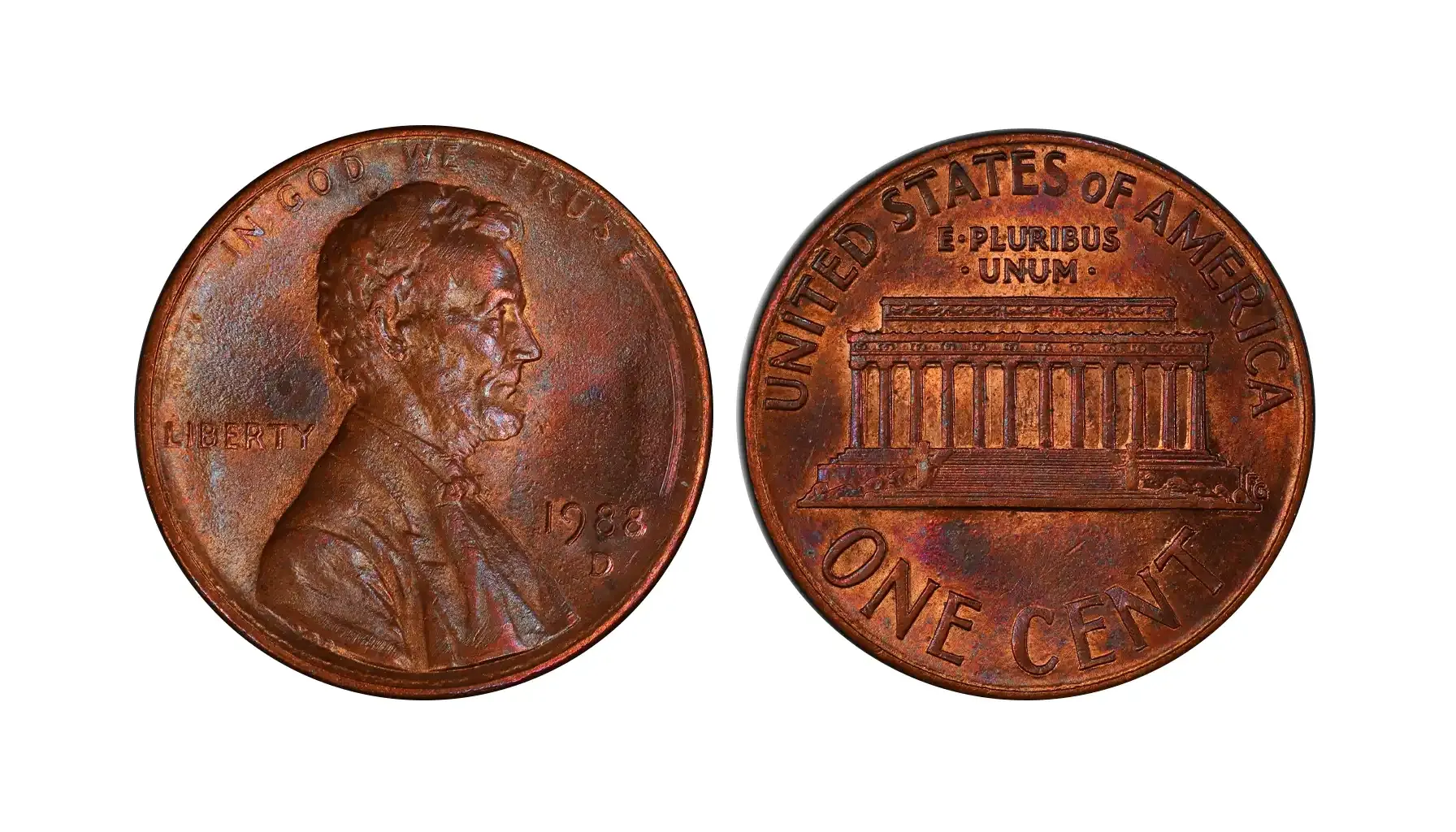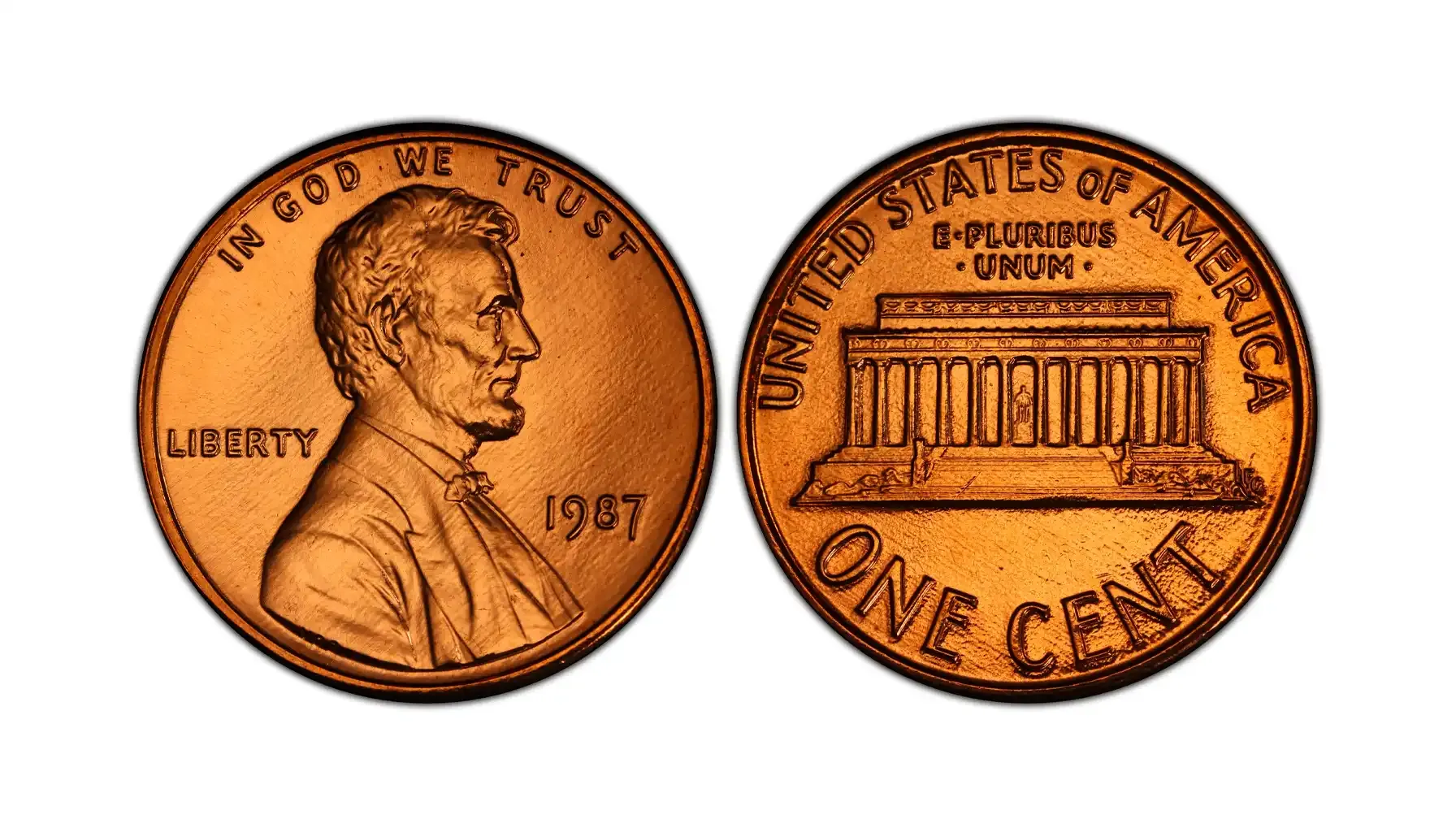Contents:
- Overview: The 1969 Jefferson Nickel
- Circulated vs. Uncirculated: How Condition Affects 1969 S Nickel Value Today
- Is a 1969 Nickel Worth Anything: Philadelphia, Denver, and San Francisco Issues
- What Are “Full Steps” and Why Such 1969 Nickels Worth Money?
- 1969 S Nickel Error List: The Hidden Jackpot?
- The “Full Steps” Phenomenon: Where Sharpness Changes How Much Is a 1969 Nickel Worth
- Real Auction Records: How High Can 1969 Nickels Go?
- How to Evaluate and Sell Your 1969 Jefferson Nickel
The Jefferson nickel 1969 might be a common sight in change jars and rolls, but not all of them are created equal. If you’ve come across a 1969 s mint nickel—or a whole collection of them—you might be surprised to learn that these mid-century cents can range from mere pocket change to valuable collectibles depending on their condition, mint mark, and potential errors.
In this guide, we’ll dive into what makes the 1969 Jefferson nickel value higher, how to identify valuable varieties, and why mint marks truly matter when assessing worth.
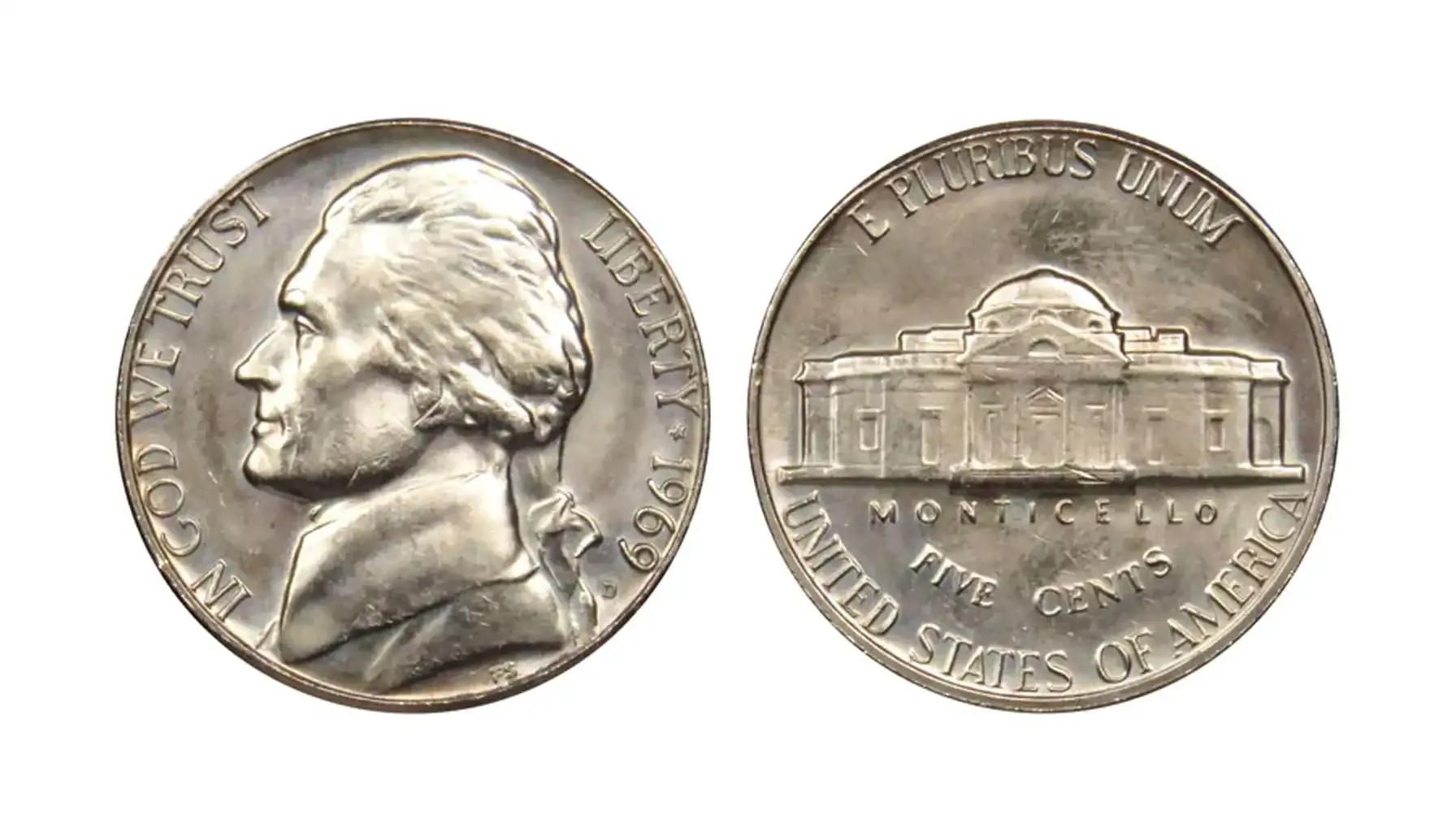
Overview: The 1969 Jefferson Nickel
Before diving into rarities, it’s important to understand the foundational details about the value of 1969 nickel to identify coins precisely:
Category | Details |
Series | Jefferson Nickel (1938–present) |
Obverse Design | Thomas Jefferson (by Felix Schlag) |
Reverse Design | Monticello (Jefferson's home) |
Metal Composition | 75% copper, 25% nickel |
Weight | 5.00 grams |
Diameter | 21.21 mm |
Edge | Plain |
Mint Marks | No mint mark (Philadelphia), D (Denver), S (San Francisco Proofs) |
These 5 cents mark the post-war American period. They are widely collected by numismatists for their historical charm and the exciting chase for rare Full Steps strikes and peculiarities from the 1969 nickel error list.
Circulated vs. Uncirculated: How Condition Affects 1969 S Nickel Value Today
Here’s a brief answer on ‘what is a 1969 nickel worth?’ for both Philadelphia and Denver issues, based on condition and rarity.
Condition | 1969 (No Mint Mark) | 1969-D (Denver) |
Circulated | $0.05 | $0.05 |
Uncirculated (MS60) | $1–$2 | $1–$2 |
High Grade (MS65+) | $10–$30+ | $10–$22+ |
Full Steps (FS) | Rare, high value | Extremely rare, up to $33,600 |
Highlight: The most valuable 1969 nickel d mint mark known to date is a 1969-D Full Steps (MS65) example, which sold for $33,600 at auction in 2021. In this article, you can learn more on searching for coins worth money.
Is a 1969 Nickel Worth Anything: Philadelphia, Denver, and San Francisco Issues
Mint marks are small letters that indicate the strike location. To understand how much is a 1969 s nickel worth, you should know three main varieties:
1969 No Mint Mark (Philadelphia)
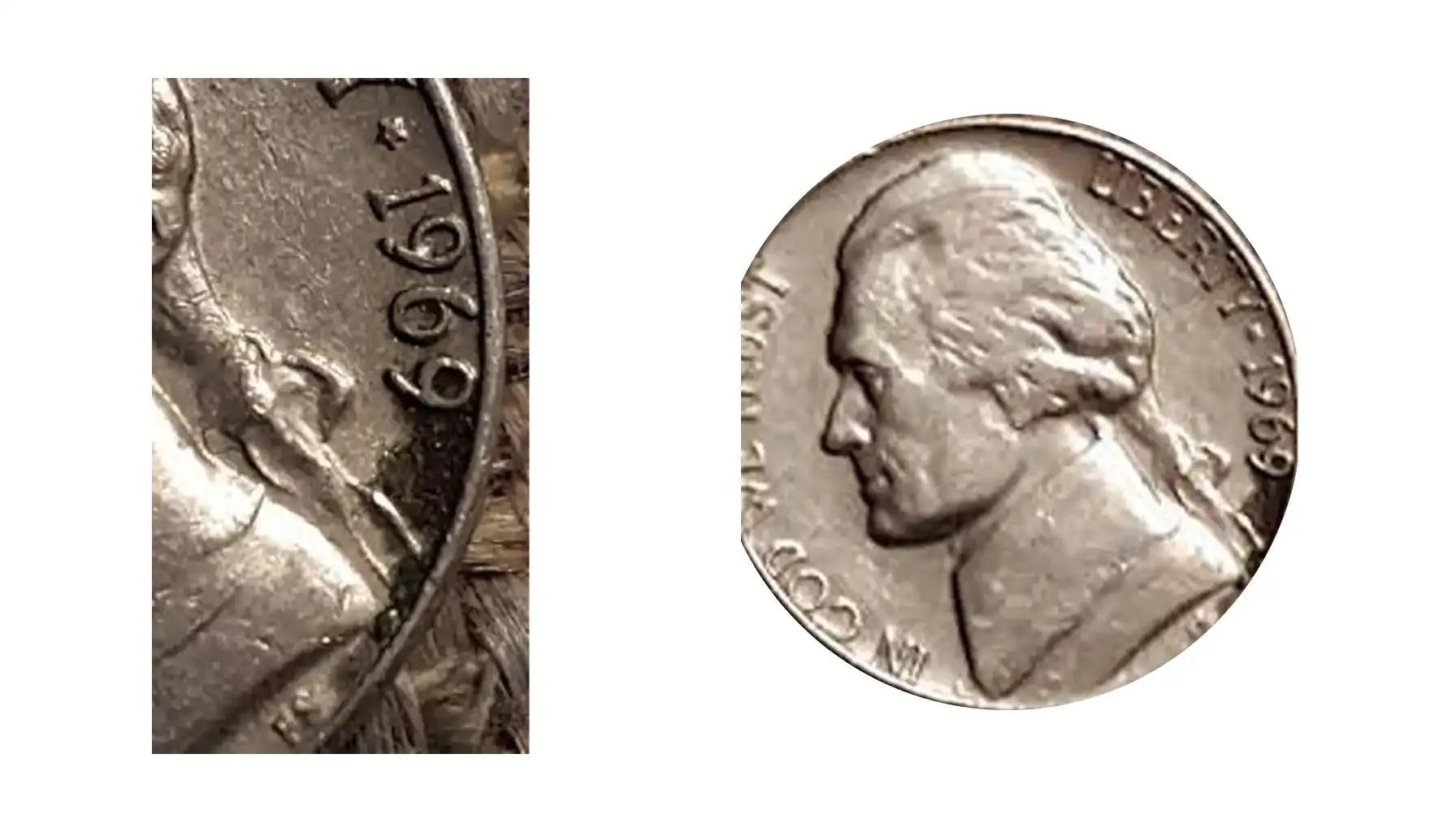
Mintage: 145,790,000
Rarity: Common
Details: Coins from Philadelphia don’t carry a mint mark.
1969 Nickel Value No Mint Mark: These are generally the least pricey unless they are in top grades or there is an error to raise the 1969 p nickel value.
1969-D (Denver)
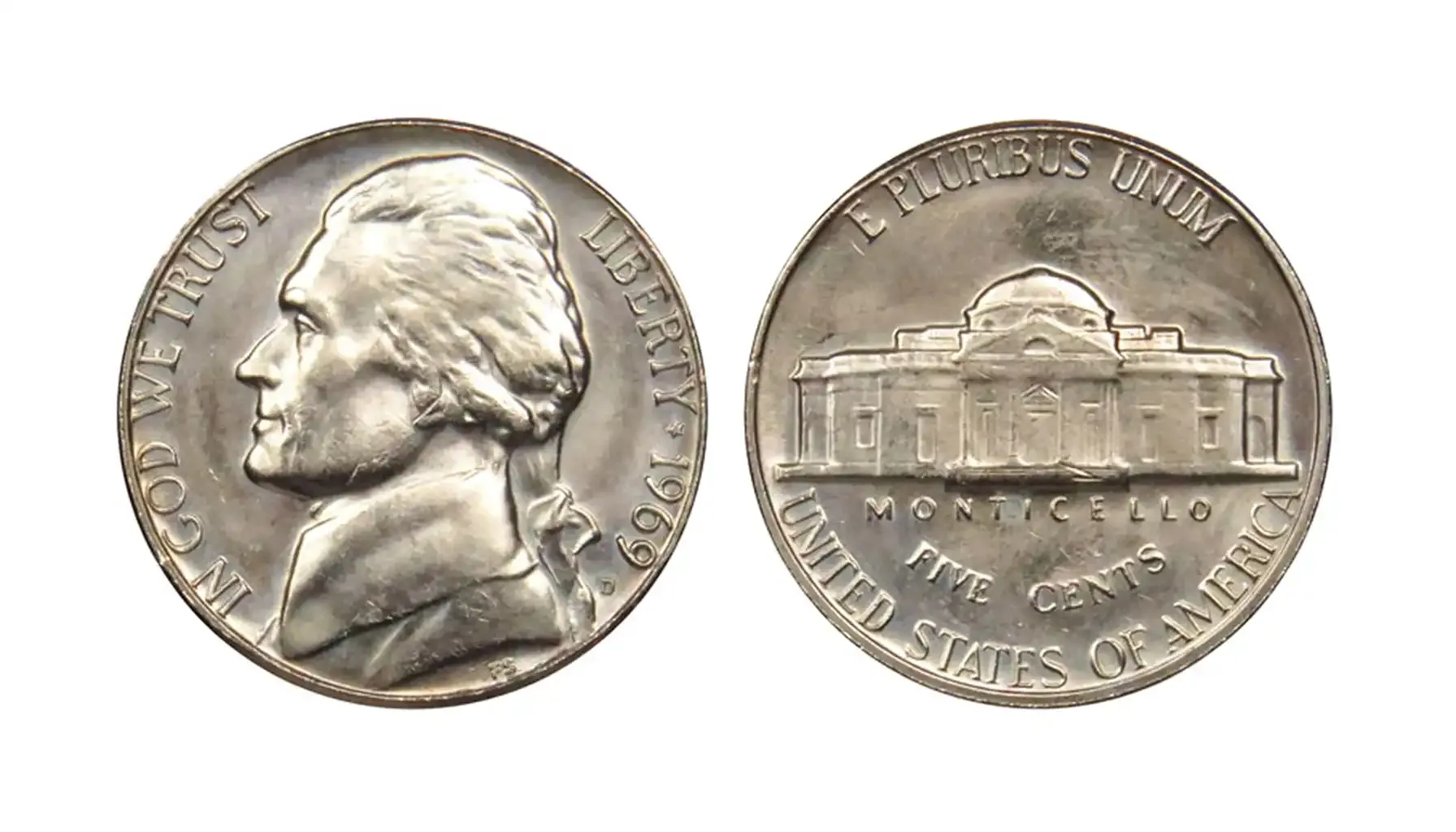
Mintage: 202,807,500
Rarity: Less common than Philadelphia, but still widely available.
Details: The "D" mint mark is located to the right of Monticello on the reverse.
1969 D Nickel Value Today: Uncirculated or Full Steps examples are desirable, especially those in MS65+.
1969-S (San Francisco Proof)
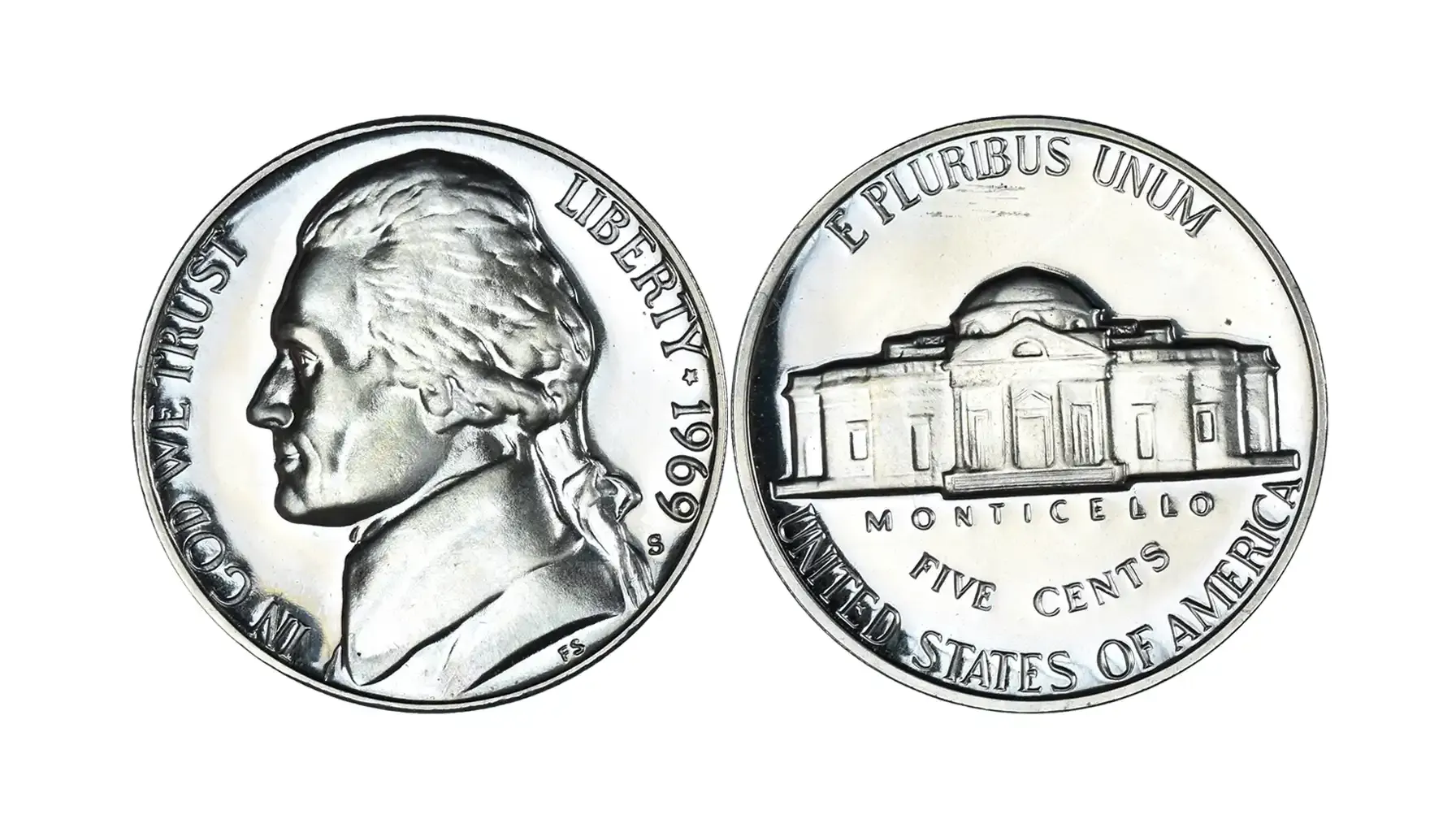
Mintage: 2,934,631 (Proof only)
Rarity: Scarce
Details: All coins from the San Francisco Mint in 1969 were produced for collectors as a 1969 proof nickel.
1969 Nickel S Mint Mark Value: These 1969-s nickel rare coins command higher prices, especially in pristine Proof 65+ condition with strong eye appeal.
What Are “Full Steps” and Why Such 1969 Nickels Worth Money?
The key factor that defines how much is a 1969 D nickel worth is the Full Steps (FS) label. This refers to the steps of Monticello on the reverse being sharply struck and fully visible.
Criteria for Full Steps:
Five or six full, unbroken steps must be visible at the base of Monticello.
The coin must have no interruptions, breaks, or merging in the step lines.
Because the 1969 nickel was produced using older die technology and quality control was less consistent, Full Steps strikes are quite rare, especially for Denver-made coins, where the strike quality was poor. If your coin meets this standard, such a 1969 d jefferson nickel value could be 10x–50x more than a regular uncirculated coin of the same year.
1969 S Nickel Error List: The Hidden Jackpot?
While most 1969 5 cents only worth their face, a select few hide exceptional 1969 nickel no mint mark value due to minting errors—flaws that occurred during the coin's production process. These anomalies are highly collectible and can boost a 1969 s nickel error value from cents to hundreds of dollars, depending on the type and severity of the misstrike.
Common Valuable 1969-s Nickel Error List
Off-Center Strikes
Occurs when the blank planchet isn’t perfectly centered during striking.
The more off-center (up to 60%), the more valuable the coin.
Values: Minor (5–10%) = $10–$30; Major (40–60%) = $100+ if date is visible.
Double Die Obverse (DDO)
Caused by a misalignment during hubbing that duplicates design elements.
Look for doubled letters in “IN GOD WE TRUST” or “LIBERTY.”
A strong DDO can fetch $50–$200+ depending on grade.
Clipped Planchet
Part of the coin appears cut off or curved.
Values range from $20–$100+ based on clip size and visibility.
Die Cracks and Cuds
Die fatigue can create raised lines or blobs on the coin.
While often subtle, some dramatic cuds are worth $30–$80+.
Strike-Through Errors
Foreign material (cloth, grease, etc.) between die and planchet causes part of the design to be missing or distorted.
Unique strike-throughs can exceed $150 in high grades.
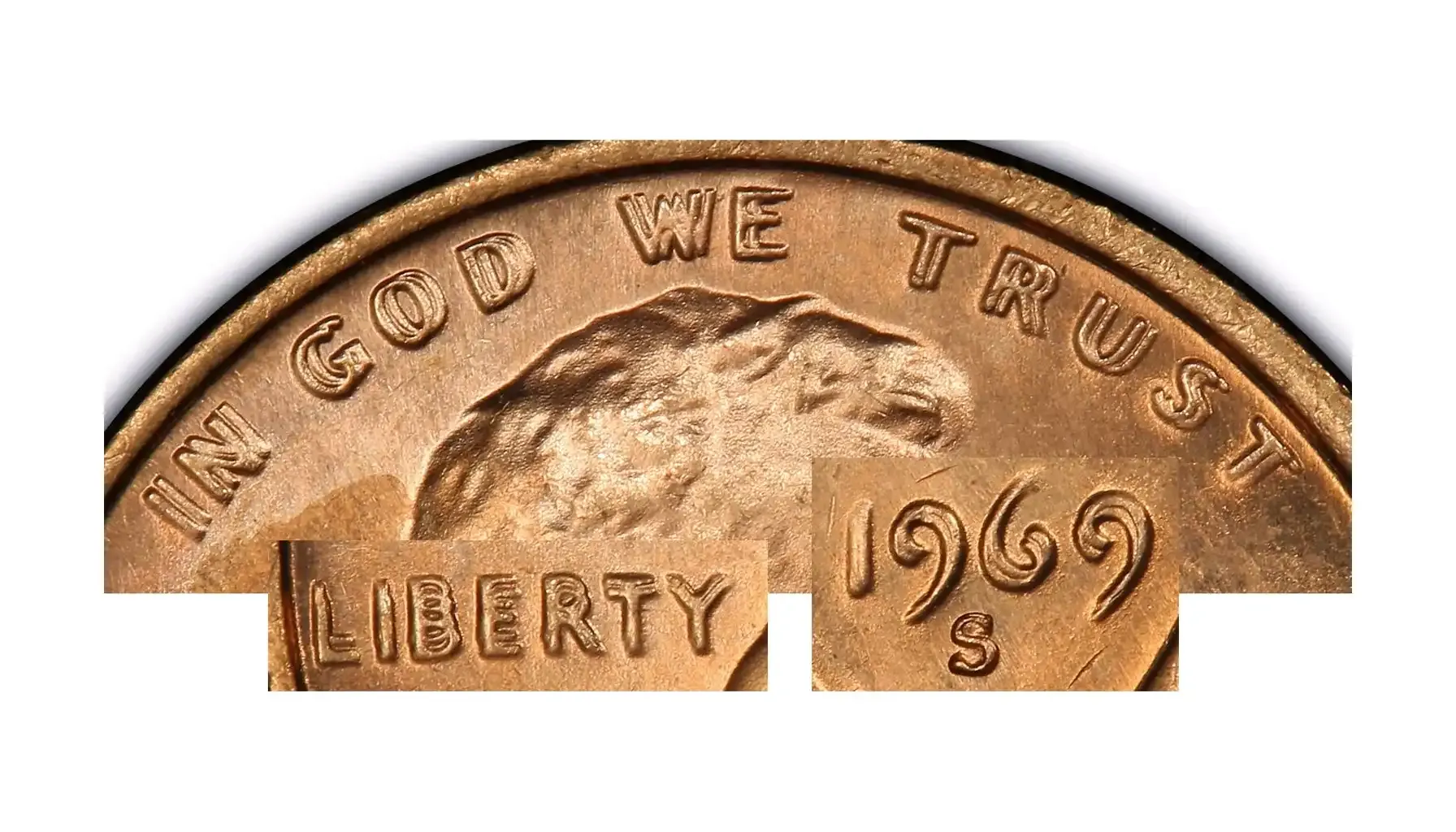
Pro Tip: If your coin looks odd, misaligned, or has design elements that appear doubled or missing—don't ignore it. Have it inspected by a professional or use the free coin identifier app for quick diagnostics — if it matches the 1969 d nickel error list, its price might skyrocket.
The “Full Steps” Phenomenon: Where Sharpness Changes How Much Is a 1969 Nickel Worth
For advanced collectors, nothing is more desirable than a Full Steps (FS) designation. These coins are graded with special attention to the clarity and completeness of the steps on Monticello’s base.
What Counts as Full Steps?
5 or 6 clearly defined, uninterrupted steps
No merging or worn areas across the step lines
Designation only applies to uncirculated (MS60+) coins
1969-D Nickel Value Differences: FS vs. Non-FS
Type | MS65 (No FS) | MS65 (Full Steps) |
1969 (No Mint Mark) | ~$8 | ~$40–$80+ |
1969-D (Denver) | ~$12 | ~$60–$150+ |
1969-S (San Francisco Proof) | ~$20 | ~$100–$400+ |
Full Steps coins are scarce because the dies used in 1969 often failed to produce sharp reverses. Those that do show full, crisp steps are considered elite collectibles, especially in grades MS65 and higher.
Real Auction Records: How High Can 1969 Nickels Go?
Collectors aren’t just guessing these values—there’s solid proof from numismatic auctions. Let’s examine a few real-world examples that showcase the upper 1969 s Jefferson nickel value limits:
Top Auction Highlights
Coin | Grade / Type | Sale Price | Auction House / Year |
1969-D Jefferson Nickel | MS66 FS | $384 | Stack’s Bowers, 2020 |
1969 No Mint Mark | MS65 FS | $210 | Heritage Auctions, 2021 |
1969-S Proof | PR67 DCAM | $423 | Heritage Auctions, 2019 |
1969 Off-Center Strike | MS64 | $158 | GreatCollections, 2022 |
As seen above, even “ordinary” 1969 cents can reach surprising figures when they include Full Steps or dramatic errors. The key to commanding premium 1969-s nickel value lies in sharp strike quality, rarity, and market demand.
How to Evaluate and Sell Your 1969 Jefferson Nickel
At this point, you know that the 1969 Jefferson nickel can range from a simple five-cent piece to a four-figure treasure. But how do you determine what your coin is worth? And what’s the best way to turn that 1969 s proof nickel value into actual money—or preserve it for long-term investing? Here's a streamlined approach to assessing and selling your coin:
Step-by-Step Evaluation Guide:
Inspect Mint Mark and Strike Quality
Check for the presence of a D or S mint mark.
Look closely at Monticello’s steps on the reverse—use a 5x–10x magnifying loupe.
Check for Errors or Anomalies
Look for off-center strikes, doubling, or clipped planchets.
Don’t ignore oddly shaped, faded, or unusually struck coins—they could be worth more.
Estimate Grade
Compare your coin to graded examples online.
Coins without any circulation wear may qualify as Mint State (MS60 or higher).
Scan With Coin ID Scanner
Use the Coin ID Scanner app to instantly analyze your coin’s features, get value estimates, and verify authenticity.
Decide on Grading
If your coin shows Full Steps, is uncirculated, or has an obvious error, send it to a grading service like PCGS or NGC.
Sell Strategically
List your coin on eBay, GreatCollections, or Heritage Auctions.
Join numismatic forums or Facebook groups where collectors actively buy and sell.
Recommended reading: How Do You Know If a Coin Is Valuable?
When to Submit for Professional Grading
Sending a coin to PCGS, NGC, or ANACS for third-party certification can add credibility—and value—to your coin. But grading isn’t cheap. Here's when it’s worth it:
Submit If:
Your coin appears uncirculated (MS60 or higher)
Monticello shows Full Steps (five or six uninterrupted lines)
It has an obvious error or variety
You want to sell at auction or to serious collectors
Avoid Submitting If:
The coin is circulated with visible wear
There’s no indication of rarity or FS
You don’t plan to sell or showcase it professionally
Cost vs. Benefit: Grading typically costs $20–$60 per coin. If your 1969 nickel isn’t likely to fetch $100+ after grading, it may not be worth the investment. Read this article to find out where do you get coins graded and how it is really done.
Most 1969 Jefferson nickels won’t make headlines—but some absolutely can. With a sharp eye and the right tools, you might discover that your coin holds more than just face value:
Circulated coins = typically worth $0.05
Uncirculated coins = can be worth $1–$30+
Full Steps = incredibly rare and worth hundreds or thousands
So, grab a loupe, check those steps, and don’t underestimate the power of a well-struck 5-cent piece. Your next great find could already be in your change jar.


